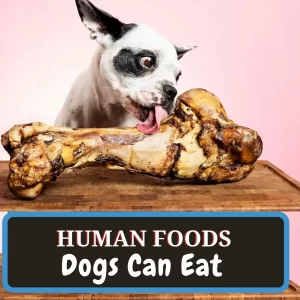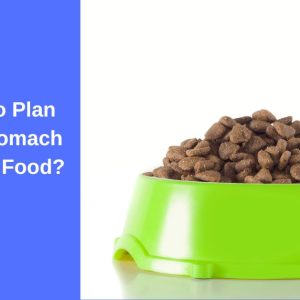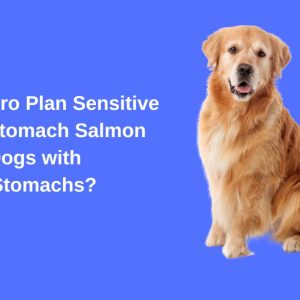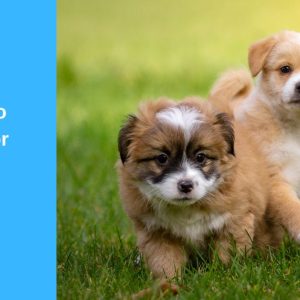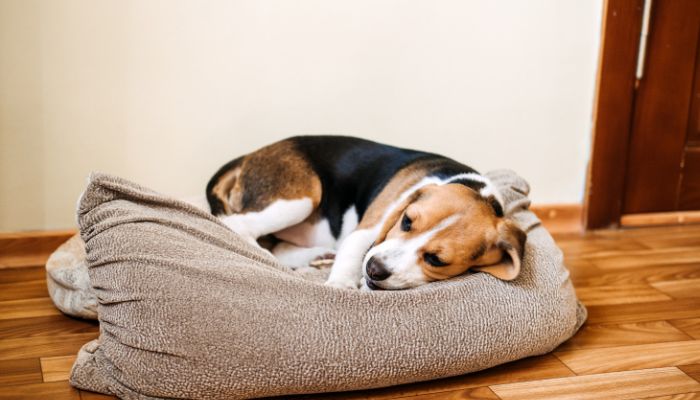
No, you should not force feed your dog with parvo. Parvo is a highly contagious and potentially life-threatening viral illness that affects dogs, especially puppies. It attacks the intestinal tract, causing severe vomiting and diarrhea, and can also affect the cardiovascular system.
If your dog has been diagnosed with parvo, it is important to follow your veterinarian’s recommendations for treatment, which may include hospitalization and supportive care such as fluids, electrolytes, and medications to control vomiting and diarrhea. Force feeding your dog is not recommended, as it can cause additional stress and discomfort for your dog and may not be effective in providing the necessary nutrients and hydration.
It is also important to prevent your dog from coming into contact with other dogs or areas where the virus may be present, such as public parks or dog kennels, to reduce the risk of transmission. If you suspect that your dog may have been exposed to the parvo virus, it is important to seek veterinary care as soon as possible.
Table of Contents
How can I get my dog to eat with parvo?
Having difficulty eating due to the symptoms of the illness, it is important to follow your veterinarian’s recommendations for treatment and care. Your veterinarian may suggest providing your dog with a special diet or using a feeding tube to provide nutrition and hydration.
It is also important to encourage your dog to eat and drink by offering small amounts of a bland diet, such as boiled chicken and rice, or an easily digestible commercial diet formulated for dogs with gastrointestinal issues. You may also want to try offering your dog a small amount of a highly palatable food, such as broth or canned pumpkin, to stimulate their appetite.
It is important to avoid forcing your dog to eat or drink, as this can cause additional stress and discomfort. If your dog is unable to eat or drink despite your efforts, it is important to let your veterinarian know so that they can provide additional support and treatment as needed.
It is also important to continue to monitor your dog for any changes in their condition and to seek veterinary care if their symptoms worsen or if you have any concerns.
How Long Can My Dog Go Without Eating With Parvo?
It is not uncommon for dogs with parvo to go several days without eating due to the effects of the virus on the gastrointestinal system. However, it is important to monitor your dog closely and to provide supportive care, including fluids and medications as prescribed by your veterinarian, to help your dog recover.
If your dog has not eaten for more than a day or two, it is important to contact your veterinarian. Dogs that go without food for too long can become malnourished and weak, which can further complicate their recovery. Your veterinarian can advise you on the best course of action and may recommend temporary feeding methods, such as administering fluids or an easily digestible diet through a feeding tube, to support your dog while it recovers.
It is important to remember that parvo is a serious and potentially life-threatening illness, and prompt medical treatment is crucial for the best chance of recovery. If your dog has been diagnosed with parvo, it is important to follow your veterinarian’s instructions and to provide supportive care as needed.
What To Feed A Puppy With Parvo
A commercial diet formulated for puppies with gastrointestinal issues, or a homemade diet consisting of boiled chicken and rice. It is important to avoid offering your puppy any highly seasoned or fatty foods, as these can further irritate the gastrointestinal tract and exacerbate symptoms.
Your veterinarian may also recommend adding a digestive enzyme supplement to your puppy’s diet to help support their recovery. It is important to follow your veterinarian’s recommendations for feeding frequency and portion sizes, as it may be necessary to feed your puppy smaller, more frequent meals to help them tolerate food and avoid vomiting.
If your puppy is unable to eat or drink due to the severity of their symptoms, your veterinarian may recommend using a feeding tube to provide nutrition and hydration. It is important to follow your veterinarian’s instructions for feeding and care, and to continue to monitor your puppy for any changes in their condition. If you have any concerns or if your puppy’s symptoms worsen, it is important to seek veterinary care as soon as possible.
How Do I Know If My Dog With Parvo Is Getting Worse?
If your dog has been diagnosed with parvo, it is important to monitor its condition closely and to be alert for any signs that its condition is worsening. Some signs that your dog’s condition may be worsening include:
- Increased vomiting or diarrhea: If your dog is vomiting or experiencing diarrhea more frequently or more severely, this could indicate that its condition is worsening.
- Loss of appetite: If your dog is not eating or is eating less than usual, this could be a sign that its condition is worsening.
- Increased lethargy or weakness: If your dog is more lethargic or weak than usual, this could be a sign that its condition is worsening.
- Changes in vital signs: If your dog’s heart rate, respiratory rate, or body temperature are outside of the normal range, this could indicate that its condition is worsening.
If you notice any of these signs or have concerns about your dog’s condition, it is important to contact your veterinarian immediately.
How To Encourage A Dog With Parvo To Eat
If your dog has been diagnosed with parvo and is having difficulty eating due to the symptoms of the illness, it is important to follow your veterinarian’s recommendations for treatment and care. Your veterinarian may suggest providing your dog with a special diet or using a feeding tube to provide nutrition and hydration.
To encourage your dog to eat, you can try offering small amounts of a bland diet, such as boiled chicken and rice, or an easily digestible commercial diet formulated for dogs with gastrointestinal issues. You may also want to try offering your dog a small amount of a highly palatable food, such as broth or canned pumpkin, to stimulate their appetite.
It is important to avoid forcing your dog to eat or drink, as this can cause additional stress and discomfort. If your dog is unable to eat or drink despite your efforts, it is important to let your veterinarian know so that they can provide additional support and treatment as needed.
It is also important to continue to monitor your dog for any changes in their condition and to seek veterinary care if their symptoms worsen or if you have any concerns.
How Do You Hydrate a Dog With Parvo?
If your dog has been diagnosed with parvo, it is important to provide it with adequate fluids to help prevent dehydration and support its recovery. There are several ways to hydrate a dog with parvo, including:
- Intravenous fluids: One of the most effective ways to hydrate a dog with parvo is through intravenous (IV) fluids. These fluids are administered through a vein and can provide your dog with the fluids and electrolytes it needs to stay hydrated. IV fluids may be administered at your veterinarian’s office or at an animal hospital.
- Subcutaneous fluids: Another option for hydration is subcutaneous fluids, which are administered under the skin. Subcutaneous fluids can be administered at home, but it is important to receive training from a veterinarian or a trained technician on how to properly administer them.
- Oral fluids: If your dog is able to drink and is not vomiting, you can offer it small amounts of water or an electrolyte solution to drink. It is important to do this gradually and to monitor your dog’s hydration status to ensure that it is receiving enough fluids.
It is important to remember that parvo is a serious and potentially life-threatening illness, and prompt medical treatment is crucial for the best chance of recovery. If your dog has been diagnosed with parvo, it is important to follow your veterinarian’s instructions and to provide supportive care as needed. Your veterinarian can advise you on the best way to hydrate your dog and may recommend additional treatment or supportive care as needed.
Average Parvo Recovery Time in dogs
The recovery time for dogs with parvo can vary depending on the severity of the illness and the timely initiation of treatment. In general, the prognosis for dogs with parvo is better when treatment is started early and the dog receives supportive care, such as fluids and medications to control vomiting and diarrhea.
On average, dogs with parvo may take 7-10 days to recover, although some may take longer. Some dogs may require hospitalization and intensive care, while others may be able to recover at home with supportive care.
It is important to note that the recovery process can be difficult and may require a lot of time and effort on the part of the pet owner. It is important to follow your veterinarian’s instructions for treatment and care and to seek veterinary care if your dog’s symptoms worsen or if you have any concerns.
How to feed dog with parvo
If your dog has been diagnosed with parvo, it is important to follow your veterinarian’s instructions for feeding and to provide supportive care as needed. Here are some general guidelines for feeding a dog with parvo:
- Offer small, frequent meals: It is important to offer small, frequent meals to a dog with parvo rather than large, infrequent meals. This can help prevent nausea and vomiting.
- Use a high-quality, easily digestible diet: A high-quality, easily digestible diet can help support your dog’s recovery and reduce the burden on its gastrointestinal system. Your veterinarian may recommend a specific brand or type of food for your dog.
- Avoid solid foods: It is generally best to avoid solid foods while your dog is recovering from parvo. Instead, you can offer a slurry of wet food or a commercial recovery diet that is formulated for dogs with gastrointestinal issues.
- Offer fluids: It is important to ensure that your dog is receiving adequate fluids to help prevent dehydration. You can offer small amounts of water or an electrolyte solution to drink, or your veterinarian may recommend administering fluids through a feeding tube or intravenously.
How Much Does Parvo Treatment Cost in dogs?
It is also a good idea to consider purchasing pet insurance, which can help cover the costs of unexpected veterinary care, such as treatment for parvo. Pet insurance policies typically have deductibles, copays, and exclusions, so it is important to carefully review the terms and conditions of the policy to understand what is and is not covered.

